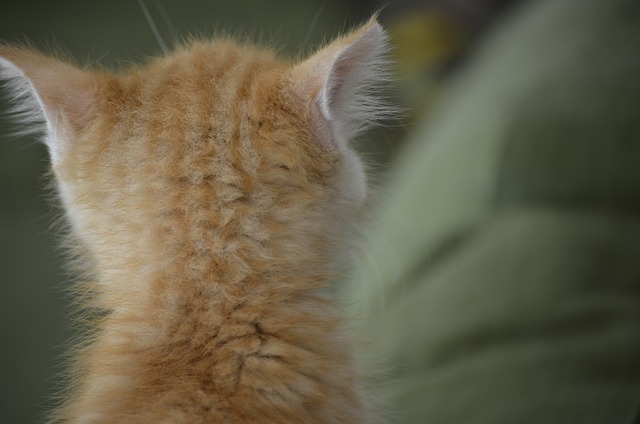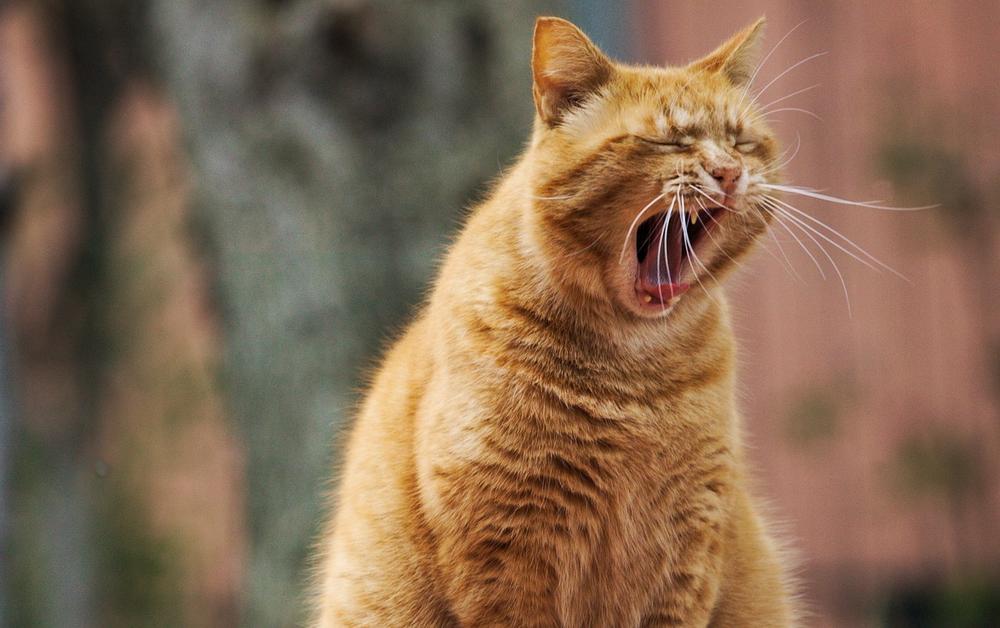Why Is Your Cat's Back TWITCHING? Should You Worry?

Cat owners everywhere, listen up...
Have you ever looked at your furry feline friend and noticed something...
Off?
Like, why is their back twitching? 😺
It's enough to make you go crazy with worry, right?
I mean, who wants to see their cat acting all jumpy and unpredictable?
But fear not, my fellow cat lovers, because today we're diving deep into the mysterious world of twitches and tremors.
So buckle up and prepare to uncover the truth behind your cat's twitching back.
Let's find some peace of mind, shall we?
Let's begin.
Understanding the Behavior of Cat's Back Twitching
Cat's back twitching can be voluntary or involuntary. Voluntary twitching is normal and linked to emotions, while involuntary twitching may indicate an underlying medical issue like Feline Hyperesthesia Syndrome. Involuntary twitching can also be a defense mechanism caused by the cutaneous trunci muscle. Consult a veterinarian if concerned.
The twitching of a cat's back can be quite confusing, wouldn't you agree?
Let me shed some light on this interesting behavior for you.
First, you need to distinguish between voluntary and involuntary back twitching in cats.
Voluntary twitching is typically linked to emotional triggers such as excitement or communication.
This type of twitching is considered normal and doesn't indicate any specific medical issue.
However, if your cat's back twitching is involuntary, it may be a sign of an underlying medical problem.
One possible condition is Feline Hyperesthesia Syndrome (FHS), which involves uncontrollable muscle contractions and changes in behavior.

Along with back twitching, FHS can cause agitation, unusual conduct, hair loss near the back and tail, and even self-inflicted injuries. Therefore, if your cat exhibits these symptoms alongside back twitching, it would be wise to visit a veterinarian.
Cats also have another muscle called the cutaneous trunci muscle (CTM) that can twitch involuntarily when the skin is touched.
It serves as a defense mechanism by flicking away insects. Interestingly, this twitching reflex may decrease or be absent during moments of excitement or fear.
Furthermore, not all cats possess this particular muscle.
Understanding the various causes and types of back twitching in cats will help you interpret your furry friend's behavior more effectively. When it comes to your cat's wellbeing, it's always better to err on the side of caution, right?
Thus, if your cat's back twitching is concerning you or if other worrisome symptoms are present, consulting with a veterinarian for further guidance is the best course of action.
Remember, no one knows your cat better than you do, so trust your instincts and take appropriate steps when needed.
Main points I'll expand upon further down this article:
- Various factors can cause back twitching in cats, including skin diseases and pain-related conditions.
- Skin diseases can lead to itching and muscle twitching.
- Epilepsy and seizure disorders can cause spasms and muscle twitching.
- Feline Hyperesthesia Syndrome (FHS) is a neurological disease that causes extreme skin sensitivity and other symptoms.
- FHS can be triggered by allergies, immune-system-related disease, seizures, and more.
- Diagnostic tests like blood count, x-rays, and skin tests are used to determine the cause of twitching in FHS.
- Treatment for cat back twitching depends on the underlying cause and can include medication, managing stressors, and adjusting nutrition.
- The goal is to decrease the frequency of episodes through environmental changes, medication, and behavioral strategies.
- Seek veterinary care if the twitching is accompanied by biting, scratching, licking, or behavioral changes.
- Report mild to moderate FHS symptoms within 24 hours and seek immediate attention for severe episodes lasting more than 2 to 3 minutes.
But did you know that there are several underlying conditions that could be causing your cat's back twitching?
From allergies and skin parasitic infections to arthritis and nerve damage, these can all contribute to muscle twitches in cats.
If you have been wondering what else might be causing your cat's behavior, let me share some interesting insights I've found!
Common Medical Conditions that Cause Cat's Back Twitching
Cats' back twitching can happen for a bunch of reasons.
Let's go through the usual suspects:
- Allergies: If your cat has an allergic reaction, it might make their skin itch and muscles twitch in their back.
- Skin parasites: Fleas or mites like to party on your cat's skin, but they can irritate it and make their back twitch.
- Arthritis: If your cat has arthritis, the joint pain can cause muscle spasms and twitches in their back.
- Nerve damage: Damaged nerves can lead to involuntary muscle contractions and twitching.
- Epileptic seizures: Cats can have seizure disorders that show up as spasms and back twitching.
- Feline Hyperesthesia Syndrome (FHS): This fancy term is essentially a neurological disorder that makes your cat super sensitive, twitchy in the back, and they may start excessive licking and biting too.
- Triggers for FHS episodes: Different things can set off FHS, like allergies, immune system problems, seizures, nerve pain, acting out, compulsive habits, or just wanting attention.
To figure out what's causing your cat's back twitching, vets might need to do tests like blood counts, x-rays, and skin tests.
The treatment depends on fixing the real issue behind the twitching.
Always remember, if your cat's back twitching, you gotta get them checked by a vet to be sure and give them proper care. 😺
But I also understand that some of you may be concerned about your cat's weight distribution.
If you've noticed that your furry friend is thin at the back end, and you're curious about the potential reasons behind it, I encourage you to check out my blog post on Why Is My Cat Thin at the Back End.
It provides valuable insights and helpful information that can put your worries to rest.
Don't hesitate to dive into the article and discover more about this topic.
When to Seek Veterinary Care for Cat's Back Twitching
If your cat's back twitches for more than 2 to 3 minutes, you need to get them to the vet ASAP. It could be a sign of something serious.
While it's normal for cats to have the occasional muscle twitch, if it's really bad and comes with other symptoms like biting or licking, it's time to see the vet.
For mild to moderate signs of Feline Hyperesthesia Syndrome (FHS), just give the vet a call within 24 hours.

But if those episodes go on for longer than 2 to 3 minutes, you don't want to waste any time - take your cat to the vet right away.
If you see these behaviors in your cat, just ride out the episode and then set up an appointment with the vet.
Always remember, your cat's health should always come first!
But what can you do to help prevent those episodes of back twitching and keep your cat comfortable?
Let me share some strategies with you!
How to Help Your Cat with Back Twitching
A cat's well-being is influenced by environmental factors, like back twitching behavior. To improve this behavior, you need to create a stress-free environment with comfy resting spots, interactive toys, and consistent routines.
Treating twitching depends on the cause and severity.
Options include meds for parasites, pain relief, reducing inflammation, or addressing epilepsy.
Managing stressors, adjusting nutrition, and using behavioral strategies also reduce episodes.
Working with a vet to identify triggers and manage the condition is vital for your cat's comfort.
And that wraps up today's article.
If you wish to read more of my useful articles, I recommend you check out some of these: Cat Has Diarrhea After Giving Birth, Older Cat Shedding Excessively, Cat Panting in Stress, and Why Is My Senior Cat Losing Its Whiskers
Talk soon,
-Sarah Davis